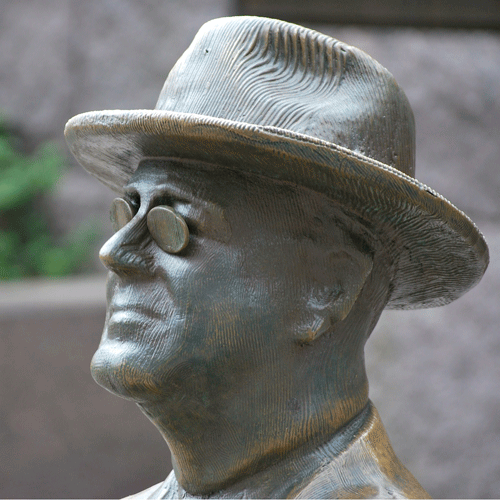
by Rose Laoutaris
Have you taken an AP United States History class? If so, you might be familiar with the frequently-used textbook, The American Pageant, that is written with a strong left-leaning bias. One chapter where this bias is particularly evident is Chapter 34 titled, “The Great Depression and the New Deal.” This time period is often taught incorrectly in high schools with a strong positive bias towards President Franklin Delano Roosevelt. However, he was not as perfect as many textbooks make him out to be, and his policies certainly did not solve the problems of the Great Depression as leftists claim.
The American Pageant starts by painting FDR in a favorable light saying, “Great crises often call forth gifted leaders, and the hand of destiny tapped Roosevelt on the shoulder,” which does not hide how the textbook’s author feels about him (780). FDR was not a miracle-worker, and he should not be credited for ending the Great Depression. However, his progressive policies are viewed to have been successful because that is what we are taught through textbooks, such as this one.
There are multiple other claims in this chapter of The American Pageant that are either misleading or completely false. One of these claims is that “[d]irect relief from Washington to needy families helped pull the nation through the ghastly winter of 1933-1934” (785). This is false because the relief was not directly from the federal government. Money was allocated to state governments which then used it for relief. This quote is also very misleading because it makes no mention of the political motivation behind which states were given the most aid.
One example of this (which was highlighted in Burt Folsom’s critique of the textbook) was when FDR made poorer states, such as Tennessee, allocate 33 percent of its funding to relief, while Pennsylvania only had to allocate 10 percent, despite it being a richer state. Why would FDR do this? He wanted Pennsylvania, who voted for Hoover, his opponent in 1932, to vote for him in 1936, and it worked.
The American Pageant also lacks objectivity when explaining the Works Progress Administration (WPA). The WPA was a massive public works project authorized by Congress in 1935 that was responsible for almost half of the national debt that year. The purpose behind it was to lower the unemployment rate by hiring people to do government jobs.
The first problem with this was that although the textbook says that “[t]he objective was employment on useful projects,” many were paid to do pointless jobs that even the textbook admits were pointless, such as controlling crickets and building monkey pens (786). However, they tried to justify it by saying “that over a period of eight years, nearly 9 million people were given jobs, not handouts” (786-787).
It is correct that people were given jobs, but these jobs were funded at the expense of the taxpayer. The reason for public works projects, such as the WPA, was to give people money to spend to stimulate the economy, but this program created an enormous debt that could only be paid off by taxation. This then prevents people from spending money on what they want and prevents creation of real jobs in the private sector.
The textbook also fails to mention the massive amounts of corruption within the WPA. Not only were people doing pointless jobs, but they were also forced to donate and volunteer for Democratic campaigns. Files from the WPA in New Jersey contain comments that said that “The WPA [workers] had to vote for him (Freeholder Emil McCall) or lose their jobs.” There was no mention of this corruption in the textbook which attempts to convince us that the WPA and other New Deal programs were successful and well-intentioned when, in reality, they were not.
Another New Deal program The American Pageant does not hide their approval of is the National Recovery Administration (NRA). It reads, “A daring attempt to stimulate a nationwide comeback was initiated when the Emergency Congress authorized the National Recovery Administration (NRA). This ingenious scheme was by far the most complex and far-reaching effort by the New Dealers to combine immediate relief with long-range recovery and reform” (787). The language used to describe this program, such as calling it a “daring attempt” and “ingenious”, already reveals their lack of objectivity. Besides the fact that it was unanimously deemed unconstitutional by the Supreme Court in 1935, the book does not highlight any other negative aspects of the NRA, such as how it hurt businesses and even led to some business owners being jailed for not following the NRA codes in order to stay in business.
The NRA was supposed to help end the Great Depression, but instead, along with the Wagner Act which gave unions new collective bargaining rights and led to forced wage increases, it prolonged it by seven years, according to UCLA economists Harold L. Cole and Lee E. Ohanian. In their study, they researched the effects of wage increases and their effect on the unemployment rate and gross national product three years after FDR’s New Deal legislation was passed and found that the unemployment rate was higher, and the gross national product was lower than it would have been had the New Deal legislation never been passed.
Rose Laoutaris is a 2018 Fall Intern.

